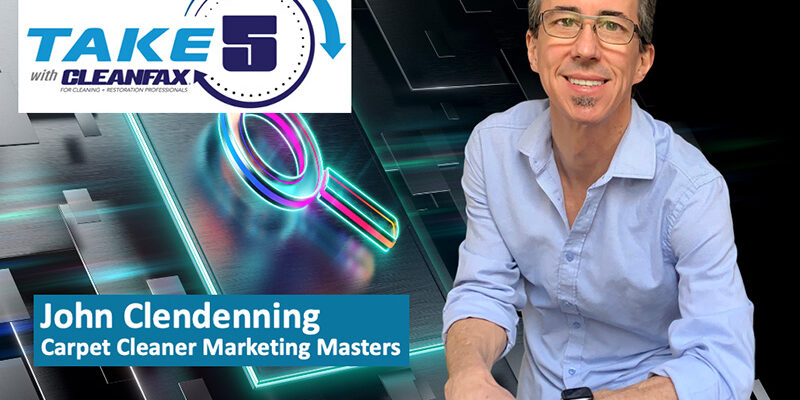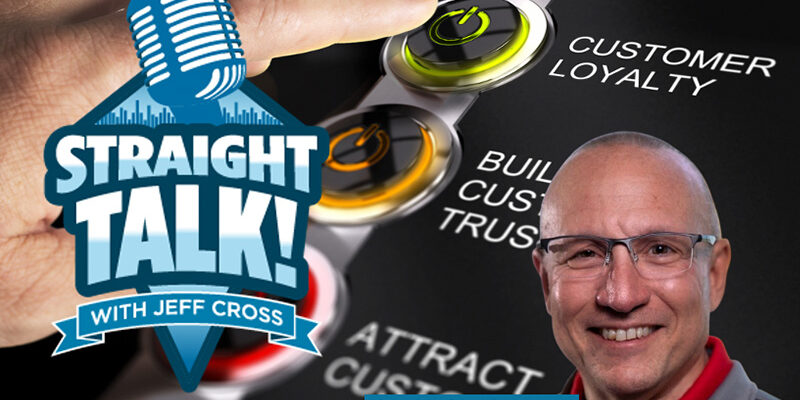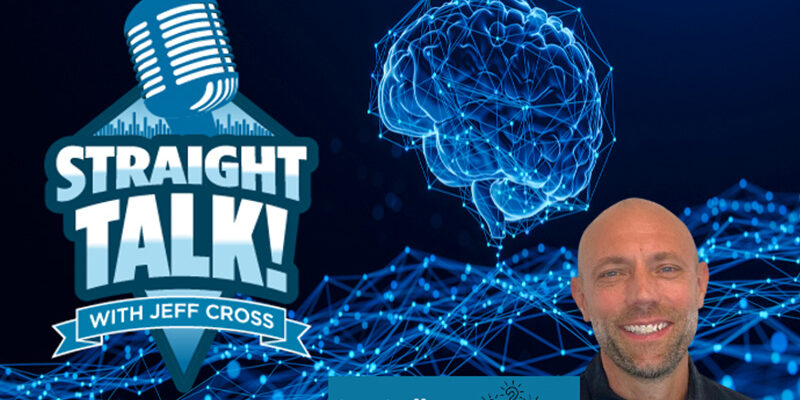Building a Bridge From Restoration’s Founding Fathers to the Modern Restorer

By Jon Isaacson with Pete Consigli
When you dig into the restoration industry’s history, you find many of the issues we “modern” restorers face aren’t so different from the challenges early restorers dealt with. I had the privilege of meeting many of the early restorers and “Founding Fathers” (Pete Consigli gave Marty King, Cliff Zlotnik, Lloyd Weaver, and Claud Blackburn this title in his 2007 article “The Four Faces of Mount Restoration.”) at the Restoration Industry Association’s (RIA) 75th Diamond Anniversary International Restoration Convention last year and learned firsthand how similar our current problems are to theirs.
Considering the blend of relevant history and modern issues we intend to share in this article, Katie Smith’s words from that event are all the more enriching: “There are thousands of contractors, but we don’t have thousands of problems. We all have the same major headaches.”
Restoration mission
Most are familiar with physicians’ Hippocratic Oath, which aims to govern all decisions doctors make. The Oath calls on new physicians to swear to uphold a number of voluntary professional ethical standards, and many of the elements aptly apply to modern property restoration:
“Into whatever homes I go, I will enter them for the benefit of the sick, avoiding any voluntary act of impropriety or corruption. So long as I maintain this Oath faithfully and without corruption, may it be granted to me to partake of life fully and the practice of my art, gaining the respect of all men for all time.”
When the Association of Specialists in Cleaning and Restoration (ASCR) was rebranded as the RIA in 2007, it unveiled the first motto in its 60-year history: “We make it better. We promise.” Ten years later, in “Connecting Mission With Motto,” Zlotnik and Consigli expanded on the promise of the motto, noting, “The business of restoration is finishing projects on time and on budget while satisfying the stakeholders, often under adverse situations, while remaining professional and making a profit.” They also pointed to King’s characterization of what we do as “the business and profession of damage repair.”
While it does not appear in the Hippocratic Oath, the phrase “First, do no harm” is often attributed to the Oath, and its tenet certainly is applicable to restoration. Restorers are called to “make it better” when assisting our clients with disaster response and repair. But, if we are going to “do no harm,” our process must include measures to ensure we properly identify the extent of damages, prevent cross-contamination, thoroughly address structural impacts, and restore property to resemble pre-loss conditions.
Restoration failure and success
The industry knows Consigli as “the restoration global watchdog” because of his encyclopedic knowledge of the restoration industry’s history, as well as his active presence in associations, educational developments, and efforts such as the Disaster Restoration Reconstruction Management program at Purdue University. Writing for IE Connections in October of 2000, Consigli noted 12 common reasons for failed restoration projects, which he called the “dirty dozen.” More than 20 years later, modern restorers are still facing these issues:
- The building didn’t have a contingency plan.
- There was either no insurance coverage, insufficient coverage, or an excluded occurrence.
- An unqualified contractor performed the work.
- An incomplete investigation was performed that
led to an improper scope of work. - The proper procedures or best restoration practices were not followed by the clean-up personnel.
- Conflict between the insurance company, the
building owner, and/or other parties to the claim led to “gridlock.” - Too many “experts” were involved.
- Hidden agendas, lack of funds, and shortcuts led
to trouble. - A pre-existing condition was not identified or was hidden in an attempt to “expedite” the claim.
- An incomplete assessment of the building’s history and occupant health was performed.
- Attorneys were called in to help resolve a problem.
- The project never had a “meeting of the minds” of the involved participants to agree on a scope of work, job cost, completion criteria, and timelines.
While there is much we could dive into on each of these points, let’s focus on the final point, the “meeting of the minds.” So many of the issues we face come down to missing a few key details on a project, which is why clear, consistent communication among all parties on a claim is essential to regular positive outcomes in disaster response services.
In the same article, Consigli says, “It is critical, following a loss, that a process starts with a meeting of the minds among the three parties that are central to a disaster restoration project,” what he refers to as the “Restoration Triangle,” made up of the property owner, insurance carrier, and restoration contractor of record. He humorously summarizes these parties as “who’s damaged,” “who’s fixin’ it,” and “who’s payin’ for it.”
Claims roles and communication
If each party within the Restoration Triangle presents its information as accurately as possible, with a clear understanding of the standard requirement to restore the property to resemble pre-loss conditions, with materials of like kind and quality, no more and no less, overall project problems will be avoided. Each party brings something unique to the table that should be heard and referenced as the agreed-upon scope is established:
- The insured (who’s damaged) has a unique perspective on the pre-loss conditions and the extent of the loss.
- The carrier representative (who’s payin’ for it) has a unique perspective regarding the details of the policy and the responsibility of the carrier with regards to the source and extent of damages—as well as any relevant exclusions.
- The contractor (who’s fixin’ it) has a unique perspective on the means, methods, and material costs that will be relevant to establishing an agreed-upon scope of work to restore the structure.
“If one of these parties is left out of the process of determining and agreeing on the extent of damage, scope of repair, cost of restoration to a pre-loss condition, timelines, and criteria for satisfactory completion, then there will be problems,” Consigli reminds stakeholders. A claim should not follow the narrative of a tv drama or a strategy for Survivor, whereby two members of the triangle team up to push their narrative through.
For example, the contractor and client should not be in cahoots to figure out a way to “maximize the claim” without justification. This is fraud. Neither should the contractor and the carrier be working together to dwindle the scope. This is short-changing.
Setting yourself up for success in the restoration process requires identifying the extent and degree of damages. The insured should expect that their damaged property will be physically inspected by at least one competent person during this determination. Upon completion of a site inspection, a scope of work must be prepared and agreed upon. The RIA Code of Ethics asks that we restorers “provide our customers with accurate information concerning the scope of work required and its costs, maintaining strict impartiality in our professional opinions.”
The adjuster’s role on a claim is to use his or her knowledge and best judgement to control the loss and ensure the insurance company pays what it owes to the insured under the terms of the policy. The contractor’s role is to provide the expertise and means to restore the damaged property to a pre-loss condition at a profit. In this role, once the insured contracts with the restorer, making them the restoration contractor of record, they have the responsibility to act in the best interests of their client (the insured). Consigli says success in this role requires “the contractor’s good-faith effort to act in their client’s best interests, make a profit, and not alienate the insurance adjuster.”
Adjusters and contractors should be able to communicate so that laymen can understand the why of their approach to observed damages. It is incumbent upon both parties to complete thorough data capture of the conditions of the damaged structure. Consigli reminds all parties, “Damage assessment is a complex process that entails training and experience. It is important that the experts provide an explanation for their recommendations to either do or not to do something.”
The details collected should translate from the site visit (via photographs and/or 360-degree capture resources) to an agreed-upon scope with an agreed-upon cost estimate. Thorough data capture leads to accurate data input for an understandable and defensible agreed-upon scope. Depending on the severity of the loss, third-party evaluators may be necessary to first determine the site risks and later provide post-project verification of safe conditions. Best practices for the inclusion of a third-party evaluator:
- Clearly define the third-party evaluator’s roles to prevent potential conflicts of interest.
- Who does the third-party evaluator work for, specifically who signs their authorization/contract?
- What parties in the Restoration Triangle are in the communication loop to receive specifications, reports, lab results, interpretations, etc.?
It will benefit any restorer to read the original article from Consigli, as well as seek out his prolific library of written materials and appearances on IAQ Radio. In the same article, he followed up with the “reliable dozen,” which admonished unprofessionalism in the industry. There he urged restoration contractors to:
- Be upfront and clear on your expectations and be specific about how they will be evaluated by the property owner and/or their representative.
- Follow the “spirit” of recognized industry standards, guidelines, and published best practices when
specifying and/or scoping a project. - Be honest and ethical, and try to do what’s right and fair.
Industry collaboration and professionalism
While I have been in this industry for nearly 20 years, there are plenty of people who have been there much longer and have made significant contributions towards shaping industry formations. Like many modern restorers, I am eager to make a difference, but I am still learning how important it is to listen and observe before jumping in or expecting doors to open. Being successful in modern restoration includes learning the restoration industry’s history and implementing those best practices that have been tested over decades.
The Hippocratic Oath included the concept of apprenticeship, whereby the skilled would share the lessons they learned, often by trial and error, with those committed to learning the craft of medicine. For this collaboration to continue in our industry we need modern restorers who innovate solutions for the ever-evolving market as well as those seasoned restorers who bring hard-won knowledge to the table and remind us that we aren’t that different from our predecessors. As we continue to collaborate, perhaps we can properly implement this sentiment from the Oath, “So long as I maintain this Oath faithfully and without corruption, may it be granted to me to partake of life fully and the practice of my art, gaining the respect of all men for all time.”
References
Consigli, Pete. “Disaster Strikes! What Ya Gonna Do…Who Ya Gonna Call? Preventing IEQ Problems After Floods, Fires, and Catastrophes.” IE Connections. October 2000.
cleanfax.com/disaster-strikes-consigli
Consigli, Pete. “The Four Faces of Mount Restoration.” C&R. March 2007.
restorationindustry.org/sites/default/files/docs/Founding_Fathers_of_Restorat.pdf
Consigli, Pete & Zlotnik, Cliff. “Connecting Mission With Motto.” C&R. October 2017.
restorationindustry.org/cleaning-and-restoration/connecting-mission-motto
Isaacson, Jon. “The Mindset and Habits for Claims Estimating Success as a New Independent Adjuster.” Claims Pages. May 2021.
claimspages.com/editorials/2021/05/05/the-mindset-and-habits-for-claims-estimating-success-as-a-new-independent-adjuster
Jon Isaacson, known as the “Intentional Restorer,” is a contractor, an author, and the host of the DYOJO Podcast. Jon speaks, writes, and coaches start-up phase owners and growth-minded restoration professionals through his organization, The DYOJO. Isaacson is the author of the Be Intentional book series for restorers. Reach him at [email protected].
Pete Consigli has been in the cleaning, restoration, and IAQ industry for nearly five decades. He contributes to trade publications and standards development and participates in industry events. Consigli is a founding father of the WLS certification designation and has been a facilitator and advisor to the program since its inception in 1999. He is an honorary member of RIA, an IAQA Hall of Fame inductee, and a recipient of RIA’s Martin L. King award. The RIA recognized him in 2021 by naming its new scholarship program, the Pete Consigli Education Scholarship, in his honor.












